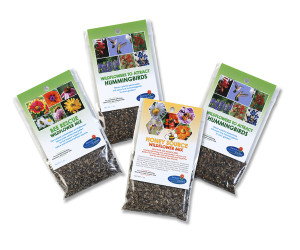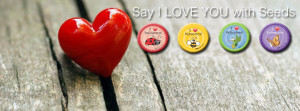Talking About Pollinators
by Sandy Swegel
You have finally come to understand how important pollinators are and why we need to protect them. One of the challenges we who value pollinators face is how to educate other people to care and get your neighbors and friends interested in pollinators too. Unfortunately, we’ll start to ramble about how bad chemicals are or how GMO crops harm the environment and if we pay attention we’ll notice our listeners’ eyes are glazing over and they’re looking for a quick exit. Even with other people interested in the same topics, it’s not long till people get that bored “You’re preaching to the choir” look. When you’re passionate you want other people to be passionate too, and maybe take to the streets in pursuit of your cause…but that rarely happens.
So what can you do to educate others about protecting pollinators? I’ve learned a lot from watching Niki, a member of our garden group, over the years. Over time she had inspired many people to put in pollinator habitats or at least to stop pouring chemicals on their lawns. And she did it without preaching. So taking inspiration from her over the years, here’s an action list on how to gently inspire others to protect pollinators and the environment.
Make a demo garden in your front yard. It was a slow start for Niki. She lived in a typical suburban neighborhood and her decision to turn her front yard from perfect green grass to a xeric native habitat caused some upset in the ‘hood. At first, people thought she was bringing property values down with all those weeds. But she kept the garden tidy and explained every plant she grew to anyone who stopped by. She invited the kids over to watch butterflies. She explained to people who asked why she was doing what she did. Her friendly attitude and a “come pick out of my garden anytime” attitude built relationships. Neighbors on their mowers noticed they were out doing yard work every weekend and she wasn’t. Then she started to tell people how much money she was saving by not watering the lawn and using chemicals. That changed a few people’s minds. She added in the info that you could protect your trees without the expensive sprays the tree companies wanted to do. Soon the whole neighborhood was just a little more pollinator friendly.
Teach the kids
Kids have open minds. Have an inviting garden with butterflies everywhere, and kids will stop to look around. They’ll ask questions and they’ll tell their families about the cool stuff they learned today.
Give away free stuff.
It’s pretty easy to collect seed from native plants or to put seed you have in little envelopes to give away. People in the neighborhood learned they could get free seeds for lots of low-water flowering plants if they stopped at Niki’s. They also learned they could get free plants. She started seeds in her living room or dug up self-seeding plants and put them in tiny pots and gave them to anyone who would learn how to take care of them. Soon, that’s native food sources up and down the block.
Offer Free Public Classes
Soon the neighbors had all the free seeds and plants they could use. So the next step was to offer free classes to the public. Our library offers meeting rooms for public groups for free so soon Niki was offering 2-hour Saturday classes on “Chemical-free gardening” or “Make your own natural cleaning products.” Another 2-hour Saturday project was the free Seed Swap in January which invited everyone to bring their extra seeds and swap with one another. Gardeners meeting other gardeners is often all it takes. Lots of people came to classes because they wanted to save money or have a safer environment for their kids. They all left with that info and with an understanding of why chemicals can really hurt bees and other pollinators and how there’s an easier way to do things. Not preachy…but well-researched information. A heartfelt story about the impact of pesticides in Kansas on monarch butterflies all over the world helps people want to do the right thing.
Be generous with your time to talk to others
Soon gardeners and community members learned Niki and now her gardening circle friends would come to talk to their neighborhood association or school about native bees and butterflies. Or they’d look at your suffering tomato plant and suggest a natural home-made remedy. Everyone got on an email group together and ended up teaching each other about natural gardening and making homes for pollinators. Local media people saw the library classes and now had someone to call when they needed a radio show or newspaper article.
Photo Credits:
www.huffingtonpost.com
www.valleyviewfarms.blogspot.com
Pollinator flower mixes
Heirloom vegetable seed
Wildflower mixes



